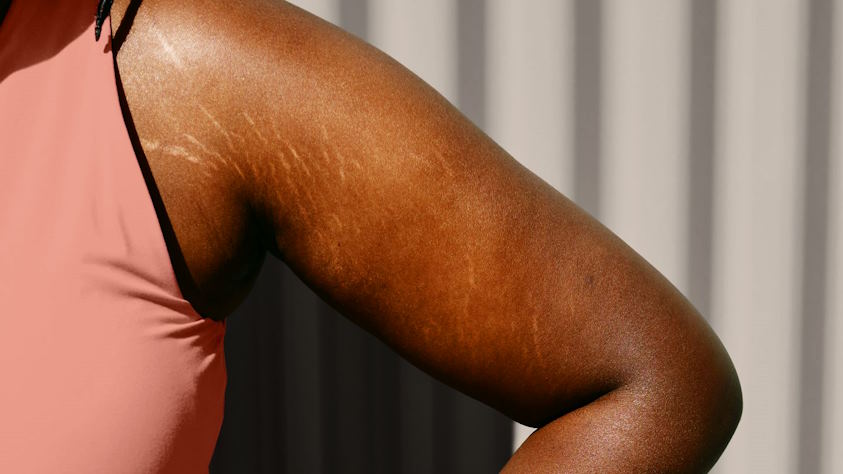How to Prevent and Treat Stretch Marks
Stretch marks, those subtle yet often bothersome lines on the skin, are a common concern that many individuals face at some point in their lives. These streaks, medically known as striae, can appear on various parts of the body, most frequently on the abdomen, hips, thighs, and breasts. While they may be a natural result of the skin’s response to growth, pregnancy, or weight fluctuations, the quest to prevent and treat them is a subject that resonates with countless people. Whether you are seeking ways to avoid stretch marks altogether or looking to diminish their appearance, this article is your roadmap to achieving healthier, more confident skin. Let’s embark on a journey to understand, prevent, and treat those resilient lines that mark our unique life experiences.
Prevention Strategies
Stretch marks may be a common occurrence, but they’re not something you have to resign yourself to. Taking proactive steps to prevent their formation is key, and one of the fundamental pillars of prevention is adopting a holistic approach to your health. Let’s explore some essential strategies you can incorporate into your daily life to keep those stretch marks at bay.
Maintaining a Healthy Diet
- Importance of Balanced Nutrition: Your skin’s health is intricately linked to what you put on your plate. A well-balanced diet provides the essential nutrients your skin needs to maintain its elasticity and resilience. Incorporate plenty of fruits, vegetables, lean proteins, and whole grains into your meals to ensure you’re giving your skin the nourishment it craves.
- Nutrients that Support Skin Health: Certain nutrients play a crucial role in supporting skin health. Vitamins A, C, and E, as well as zinc and collagen-boosting foods like bone broth, are your skin’s best friends. These elements help repair damaged skin tissue and maintain its strength and suppleness.
Hydration
- Role of Water in Skin Elasticity: Your skin’s elasticity is directly tied to its moisture content. Staying adequately hydrated ensures your skin remains pliable and less prone to stretching. Water helps maintain the skin’s natural barrier, protecting it from external stressors.
- Recommended Daily Water Intake: While individual water needs vary, a general guideline is to aim for at least eight 8-ounce glasses (about 2 liters) of water a day. Adjust your intake based on factors like climate, activity level, and personal preference, but don’t underestimate the power of hydration in safeguarding your skin.
Regular Exercise
- Benefits of Exercise for Skin: Exercise offers numerous benefits, and one of them is promoting skin health. Physical activity increases blood flow, which helps deliver essential nutrients to your skin cells. It also encourages collagen production, giving your skin the structural support it needs to remain firm and resilient.
- Types of Exercises that Promote Skin Health: Incorporating a variety of exercises into your routine can be particularly beneficial. Cardiovascular activities, like running or cycling, improve circulation, while strength training can help build and tone muscles, providing added support to your skin.
Gradual Weight Management
- How Rapid Weight Gain or Loss Contributes to Stretch Marks: Rapid fluctuations in weight put significant stress on the skin, increasing the likelihood of stretch marks. When you gain or lose weight too quickly, the skin doesn’t have sufficient time to adapt, leading to the development of these unsightly marks.
- Strategies for Healthy Weight Management: Maintaining a stable weight through gradual and sustainable changes can minimize the risk of stretch marks. Focus on balanced eating and regular exercise to achieve your weight goals in a way that is kind to your skin.
Treatment Options
Stretch marks can be a source of concern for many, but the good news is that there are various treatment options available to help reduce their appearance. Whether you prefer over-the-counter solutions, medical procedures, or natural remedies, there’s likely a method that suits your needs and preferences.
Over-the-Counter (OTC) Remedies
- Discussion of OTC Creams and Oils: OTC creams and oils are readily available in most drugstores and can be an accessible first step in your stretch mark treatment journey. These products often contain ingredients like retinoids, hyaluronic acid, and vitamins that can promote skin regeneration and improve texture. It’s essential to choose a product suited to your skin type and apply it as directed for the best results.
- How to Use OTC Products Effectively: Consistency is key when using OTC products. Apply the cream or oil to the affected areas daily, gently massaging it in with a circular motion. Results may take time, so be patient and stick to your routine. Additionally, consider combining OTC treatments with other prevention strategies for a comprehensive approach.
Medical Procedures
- Dermatological Treatments such as Laser Therapy: If you’re looking for more intensive and immediate results, dermatological treatments like laser therapy may be a suitable option. Laser therapy uses focused beams of light to stimulate collagen production and break down the scar tissue responsible for stretch marks. Multiple sessions may be required for optimal results, but the outcome can be remarkable.
- Microneedling and Other Clinical Options: Microneedling is another clinical option that involves the use of tiny needles to create micro-injuries in the skin, promoting collagen production and skin regeneration. Your dermatologist may also recommend chemical peels or microdermabrasion to reduce the appearance of stretch marks.
Home Remedies
- Natural Ingredients for Treating Stretch Marks: Many individuals prefer natural remedies, and some natural ingredients have shown promise in treating stretch marks. These include aloe vera, coconut oil, and vitamin E oil. These ingredients can be applied directly to the skin and may help improve hydration and reduce the visibility of stretch marks over time.
- DIY Methods and Precautions: When using home remedies, it’s essential to be consistent and patient. While these methods can be effective for some, results may vary. Additionally, perform a patch test to ensure you don’t have any adverse reactions to the ingredients. Be cautious and consult with a dermatologist if you have any concerns.



